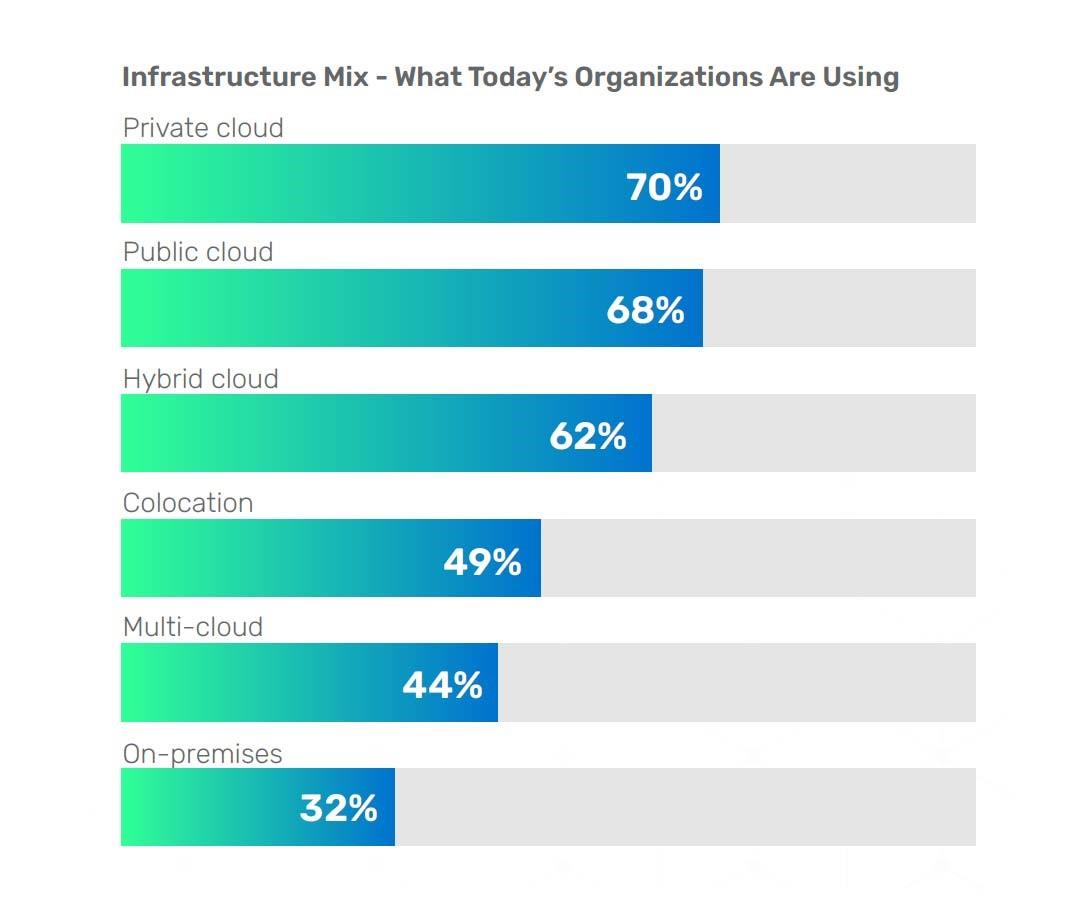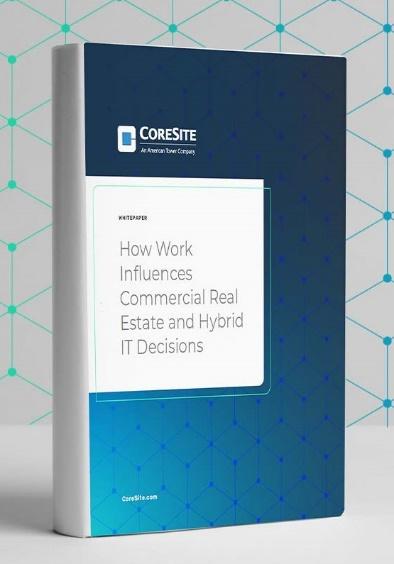
Rethinking Commercial Real Estate for Hybrid Work and Hybrid IT
When it comes to making decisions about leasing, buying or building commercial real estate, “the times they are a-changing.” Driven by employee demands for flexible work locations and schedules, the near ubiquitous availability of broadband connectivity and Covid-19 public health mandates, C-level executives are being compelled to reimagine their workplace strategies.
- According to global commercial real estate services company CBRE, 87% of companies with 10,000 or more employees say they will be adopting hybrid work and 85% of employees say they would prefer to work virtually at least two-to-three days a week going forward.1
- A 2022 survey of human resources leaders conducted by the Conference Board, a nonprofit business research group, found that just 4% said they were requiring all employees to return to the workplace full-time.2
“The fact is, corporate America is likely changed forever. You’re making a huge mistake if you require folks back in the office full time because they see the progress most companies have made in the past two years and they’ll ask, ‘why?’”
- Amy Zimmerman, Chief People Officer, Relay Payments
While hybrid work is not new, it’s rapidly becoming the new norm among a majority of previously office-bound employees and a significant factor for attracting top talent. It requires new thinking among executives, who previously made commercial real estate decisions based primarily on square-foot-per-employee calculations and spending for iconic buildings designed to be branding statements.
It also begs the question: How much space do we dedicate for an on-premises data center, especially as the cloud and colocation steadily grow more prominent in our operations?
Work-Life Balance Really is a Thing
In 2019, 22% of full-time employees worked from home. In 2020 that number nearly doubled to 43%.3 During the pandemic, employees were allowed or encouraged to work from home. Although IT departments scrambled to accommodate the shift, broadband connectivity made collaboration and remote access to core business applications reliable and secure.
“Hybrid work is going to be the most lasting organizational legacy of Covid-19…”
Robin Erickson, Vice President of Human Capital, The Conference Board
Employees are now used to working remotely, and many are not eager to return to commuting. Moreover, the experiences of the past few years proved that various types of employees can work quite effectively from remote locations, allaying concerns that allowing employees to work remotely would negatively affect productivity. In fact, a number of studies conducted on the impact of remote work on productivity have revealed that workers report their productivity has actually increased when they’ve been allowed to work remotely.
As one case in point, data from Prodoscore, a leader in employee visibility and productivity intelligence software, showed a mid-pandemic increase in productivity of 47% among their remote workforce.4
Concerns about employees’ ability to collaborate efficiently have also been dispelled to a significant extent due to UCaaS (unified communications as a service) platforms such as Slack, Zoom and Microsoft Meetings. Additionally, employee job satisfaction and retention rates have risen because they’ve been given the flexibility to work remotely, either full- or part-time. Apparently, work-life balance really is a “thing.”
Hybrid IT Facilitates Hybrid Work
The advent of technologies enabling employees to be connected to virtual private networks, enterprise WANs, the internet, public and private clouds and applications – some hybrid IT building blocks – has made the transition to increased hybrid work less painful.
In the past, private networks and resources typically were located on-premises. For all the reasons we’ve given, companies are increasingly migrating some or all of their IT infrastructure to colocation data centers. By doing so, companies can optimize the performance, scalability, reliability and cost efficiency of their IT assets while reducing their commercial real estate footprints and the associated high costs.
It also gives decision makers the option to use the space that would have been a data center to meet employees’ desire for relaxation areas, healthy food services and outdoor areas.5

Colocation Data Centers Support “Flexagility”
A colocation data center is a physical facility that offers space with the proper power, cooling and security to host businesses’ computing hardware and servers. This capacity includes anything from cabinets to cages or private suites.
Colocation providers lease space to various tenants looking for colocation services – including network providers, cloud providers and companies in virtually every industry sector – at costs appropriate for IT purposes versus prestigious commercial real estate office costs. Tenants can interconnect to one another within the colocation data center and do business together. They can also connect with other businesses and service providers whose IT infrastructures are located elsewhere. This allows businesses to centralize their IT operations and in the process:
- Improve overall performance
- Reduce latency to meet application and use case requirements
- Increase scalability
- Enhance security
- Facilitate “flexagility” (the combination of flexibility and agility)
- “Rightsize” commercial office space footprints and significantly reduce costs
By migrating their IT assets to a colocation facility, companies can also potentially reduce the burden on and/or the need for in-house IT staff to handle routine tasks.
Resources to Help Guide Your Decision

Download our new white paper – How Work Influences Commercial Real Estate and Hybrid IT Decisions – to think through these questions and find direction on a hybrid work model that’s best for your business and commercial real estate strategy.
- What is our core space and how is it used?
- What is our remote work policy?
- Which kinds of workspaces do we need?
- How can technology help us achieve flexagility?
After all, anything that contributes to your bottom line and your ability to provide outstanding service levels and accessibility to your employees, customers and business partners is definitely worth exploring.










